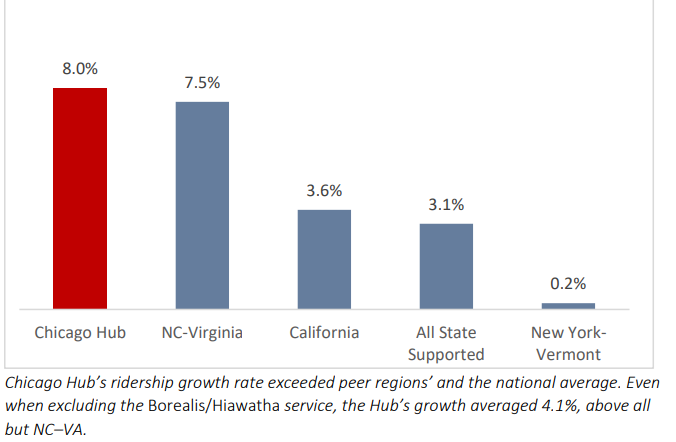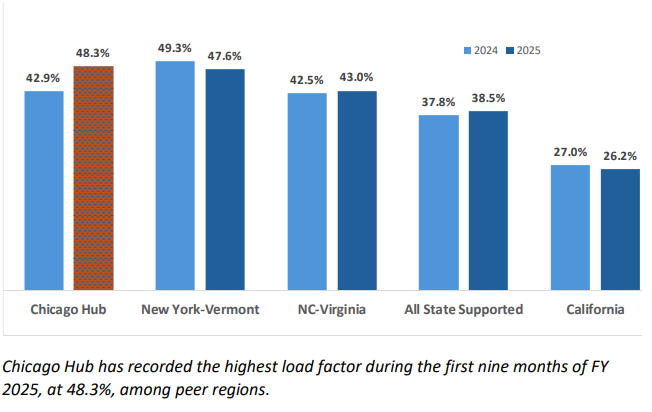Amtrak train rolls through the Midwest
August 28, 2025
Midwest Rail Ridership is Booming, but How Far Can It Grow?
New report highlights future challenges for passenger rail in the Midwest - not enough seats to meet demand
By Kevin Brubaker, Chief Operations Officer & Deputy Director
Good news: Midwest rail service is booming, with 8% year to date ridership growth, surpassing our “competitors” in New York, California, and North Carolina. Thanks to the new Borealis rail service between Chicago and the Twin Cities, Midwest travelers have additional rail travel options and are taking them. And we’re about 98% of the way back to pre-COVID travel levels, which we’ll likely hit by late 2026.

Bad news: We’re about to hit our peak. With most trains already running at near capacity, there simply aren’t enough seats left to fill with would-be passengers. Trains are regularly sold out during peak periods. And while seat may be available between, say, Carbondale and Champaign that seat is likely sold between Champaign and Chicago. The system is functionally near capacity.

Load factor is defined as passenger miles of travel divided by seat-miles of service provided
These are the findings of a new study by Joe Schwieterman and the Chaddick Institute for Metropolitan Development at DePaul University.
Importantly, Dr. Schwieterman points to the lack of concrete plans here for new capacity – no new routes, no new frequencies, and no additional train cars. Thus, no ability to meet the latent demand for rail travel. As the authors put it, “State agencies should establish priorities to avoid elongating the timeline of service expansions. Although technical factors may prevent service expansion to Columbus, OH, Green Bay, WI, the Quad Cities, IL, central Iowa, and other points before the end of 2030, it is important to avoid stretching out the timelines further than necessary. Such efforts will build, sustain, and expand the impressive momentum underway in the Chicago Hub.”
We agree.


